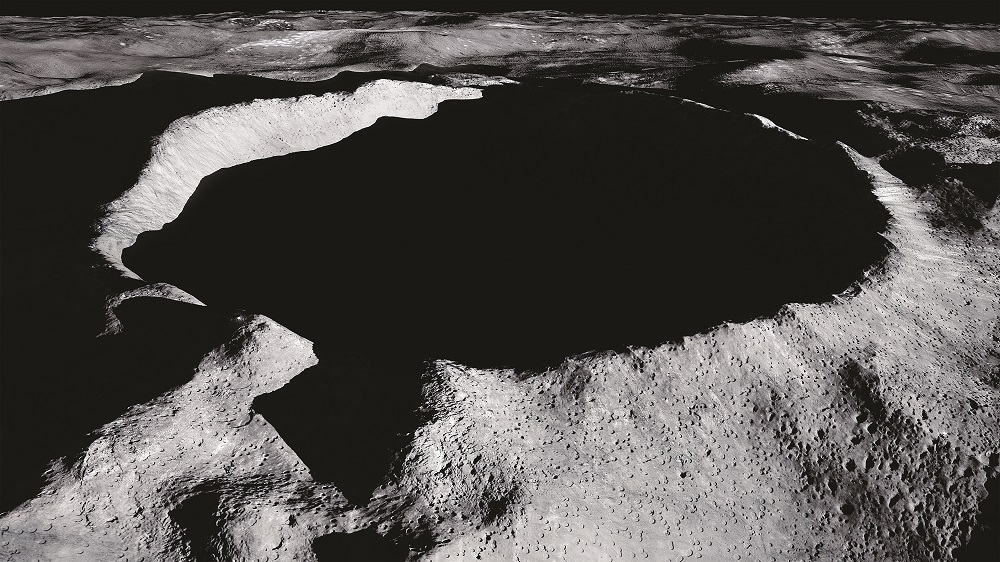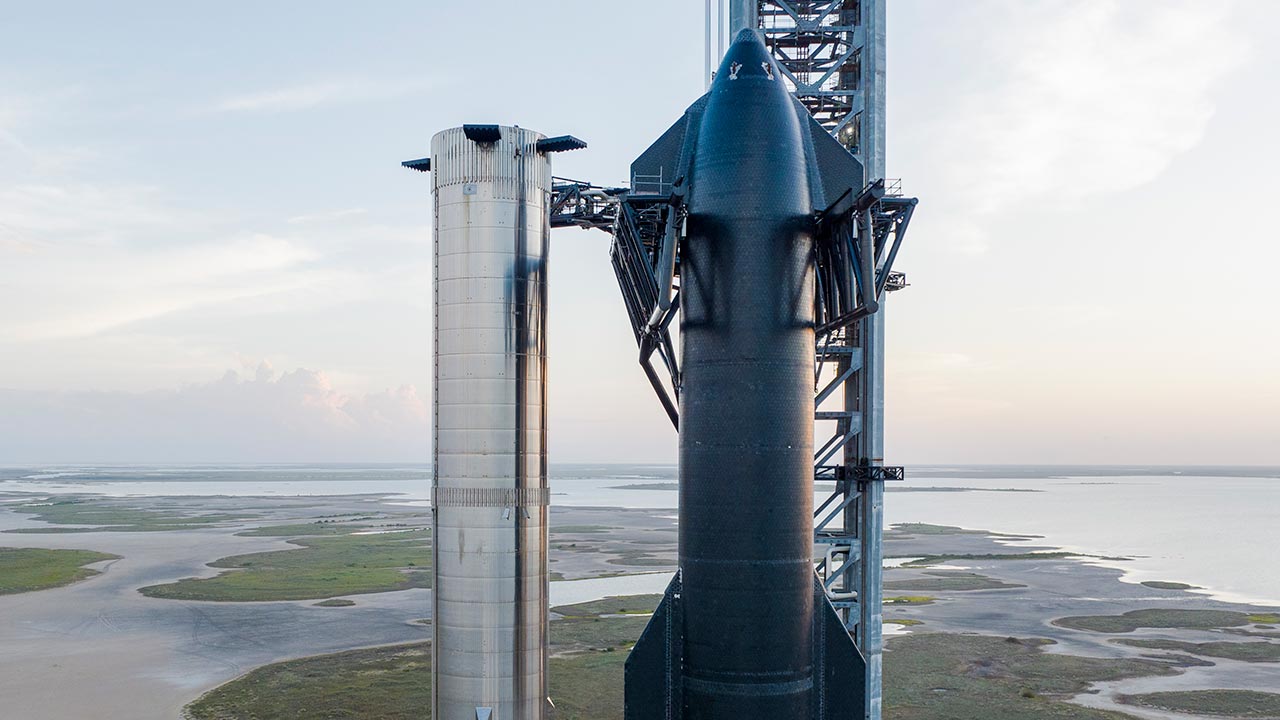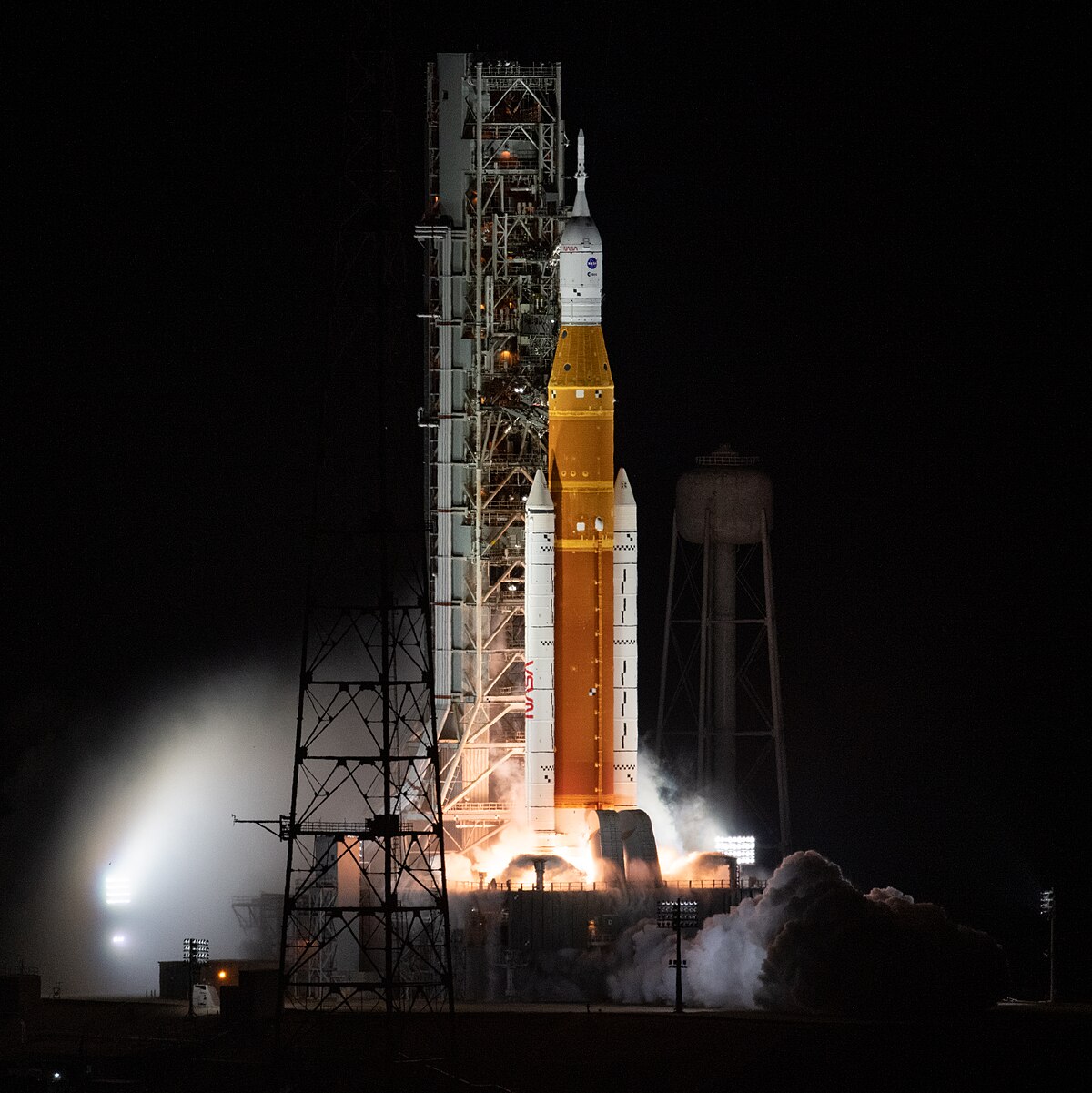NASA and other global space programs (excluding Indian) news, Updates and Discussions
- Thread starter ketaki
- Start date
More options
Who Replied?- Joined
- Apr 25, 2020
- Messages
- 3,879
- Likes
- 1,249
Hydrogen leak delays moonshot by at least several weekssuper heavy rocket SLS rollout again for launch thiss time!
View attachment 169051
View attachment 169052
NASA’s star-crossed Space Launch System moon rocket was grounded for the second time in five days Saturday, this time by a large hydrogen leak in a fuel line quick-disconnect fitting that will delay the $4.1 billion booster’s maiden flight by several weeks, likely into October.
The latest delay was a frustrating disappointment to the Kennedy Space Center work force, invited guests and thousands of area residents and tourists who lined area roads and beaches to watch NASA’s most powerful rocket blast off, raising the curtain on the agency’s Artemis moon program.
But faced with a large hydrogen leak and without enough time to make repairs before the current lunar launch period ends Tuesday, NASA managers had little choice but to order a delay.
Engineers are assessing two options to fix the latest problem: replace components in the suspect fitting at the launch pad and carry out a mini fueling test with liquid hydrogen to verify leak-free performance. Or roll the rocket back to the Vehicle Assembly Building and carry out repairs there.
While the VAB would provide shelter from the weather and would not require assembly of an environment enclosure to protect sensitive components during the repair work, engineers would not be able to test the fitting with cryogenic hydrogen. And that’s when leaks are most likely to show up.
Either option means a multi-week launch delay. The next lunar launch period starts September 19 and runs through October 4. But NASA is scheduled to send a fresh crew to the International Space Station aboard a SpaceX capsule on October 3 and the agency wants to avoid a launch conflict.
That means the SLS launch likely will slip into the next launch period, which opens October 17 and runs through Halloween, unless a solution can be found to speed up the repair work.
“This is an incredibly hard business,” said Artemis 1 mission manager Mike Sarafin. “Our focus is on understanding the problem. … We’ll follow up next week when we have those options flushed out further.”
During Saturday’s countdown, engineers made three attempts to properly “seat” a suspect seal and stop a leak in the 8-inch quick-disconnect fitting, but none of them worked. After a “no-go” recommendation from the engineers working the problem, Launch Director Charlie Blackwell-Thompson called off the countdown at 11:17 a.m. EDT.
“We’ll go when it’s ready,” said NASA Administrator Bill Nelson. “We don’t go until then, especially now, on a test flight.”
It’s not yet clear what caused the leak, but Sarafin said a valve was inadvertently cycled during the initial moments of the fuel loading operation, briefly over pressurizing the lines and the quick-disconnect fitting.
“There was an inadvertent pressurization of the hydrogen transfer line that exceeded what we had planned, which was about 20 pounds per square inch,” he said. “It got up to about 60 pounds per square inch. The flight hardware itself, we know it is fine, we did not exceed the maximum design pressure.
“But there’s a chance that the soft goods, or the seal in the eight-inch quick disconnect saw some effects from that, but it’s too early to tell. … What we do know is that we saw a large leak.”
The goal of the Artemis 1 mission is to boost an unpiloted Orion capsule into a distant orbit around the moon, testing the spacecraft in the deep space environment before returning it to Earth for a high-speed, high-temperature re-entry.
If the initial uncrewed test flight goes well, NASA plans to launch four astronauts on an around-the-moon shakedown flight — Artemis 2 — in 2024 and to land the first woman and next man near the moon’s south pole the 2025-26 timeframe. But all of that hinges on a successful Artemis 1 test flight.
The long-awaited mission must take off during specific launch periods based on the constantly changing positions of the Earth and moon, the desired lunar orbit for the Orion spacecraft and the power of the SLS rocket to put it on the proper trajectory.
Complicating the planning, flight planners want to avoid putting the solar-powered spacecraft in the moon’s shadow for extended periods and they want to ensure a daylight splashdown.
The current launch window closes Tuesday, the same day certification of batteries in the rocket’s self-destruct system expires. That alone would have required roll back to the Vehicle Assembly Building for already-planned servicing because the batteries cannot be accessed at the launch pad.
NASA attempted to launch the SLS rocket on its maiden flight Monday after four countdown rehearsals and fueling tests, all of which ran into multiple technical snags, including hydrogen leaks in different systems.
During Monday’s launch attempt, a faulty temperature sensor led to uncertainty as to whether the SLS rocket’s four RS-25 first stage engines were receiving the proper pre-launch cooling.
In addition, the same fitting that leaked Saturday also leaked during the Monday launch try, but concentrations were much lower and engineers managed get the hydrogen tank filed before the enging cooling issue cropped up.
As it turned out, the engines were, in fact, being properly chilled and a faulty temperature sensor was responsible for misleading engineers.
- Joined
- Apr 25, 2020
- Messages
- 3,879
- Likes
- 1,249

UAE rover to fly on China’s Chang’e-7 lunar south pole mission
The United Arab Emirates will fly its Rashid 2 rover on China’s 2026 Chang’e-7 lunar landing mission to the lunar south pole.
 spacenews.com
spacenews.com
PARIS — The United Arab Emirates will fly its Rashid 2 rover on China’s 2026 Chang’e-7 lunar landing mission following an agreement between the two countries.
A memorandum of understanding was signed Sept. 16 by H.E. Salem Humaid AlMarri, Director General of MBRSC, and Wu Yanhua, Vice Administrator of CNSA, marking a first instance of cooperation between the two for a space mission.
Chang’e-7 is a multi-spacecraft mission involving an orbiter, lander, rover and a small, repetitive movable lander for investigating shadowed craters. The surface spacecraft will be supported by a relay satellite operating in an inclined, highly elliptical lunar orbit.
The mission will now also carry the small UAE rover which will be developed by the Mohammed bin Rashid Space Center (MBRSC) in Dubai. No specifications for the vehicle have so far been released.
Launch of Chang’e-7 is currently expected in late 2026, according to Chinese reports. Earlier Chinese mission plans suggested that the mission could launch around 2024 and before the Chang’e-6 sample return.
The spacecraft will have a combined mass of around 8 tons and launch on a Long March 5 rocket.
Some of the mission’s apparent candidate landing sites overlap with those recently selected as possible landing areas for NASA’s Artemis 3 crewed mission.
China, the U.S. and others are interested in areas of the south polar region which provide good lighting conditions, safe landing areas and proximity to permanently shadowed craters that are thought to contain cold-trapped volatiles including water ice.
The UAE is due to see its Rashid 1 rover, named for Dubai’s late ruler Sheikh Rashid bin Saeed Al Maktoum, launched later this year by a Falcon 9 rocket. The 10-kilogram rover will be carried by the Hakuto-R lander developed by Japanese firm ispace.
The UAE is a signatory to the U.S.-led Artemis Accords which seeks to establish a shared set of principles for responsible behavior on the moon, but cooperation with other parties is not prohibited.
International Traffic in Arms Regulations (ITAR), which restrict and control the export of technologies, could however pose different questions for the manufacture of the Rashid 2 rover.
China opened its Chang’e-7 mission to prospective partners for a small rover when it announced a roadmap in June 2021 for an International Lunar Research Station in partnership with Russia.
China has already landed two lander-rover missions on the near and far sides of the moon with Chang’e-3 and Chang’e-4 respectively. It also carried out a complex lunar sample return mission in 2020 with Chang’e-5.
The country’s next scheduled lunar mission is Chang’e-6 which will attempt to collect samples from the South Pole-Aitken Basin on the far side of the moon.
The landing site is however expected to be at a similar latitude to that of Chang’e-5 rather than in the vicinity of the lunar south pole. Chang’e-3, 4 and 5 all set down at a latitude in the mid-40s, suggesting the spacecraft are designed for lighting conditions in these areas.
Chang’e-7 spacecraft will require different solar array designs to operate in challenging lighting conditions at the lunar south pole.
Chang’e-6, 7 and 8 planned for launch this decade are part of a fourth phase of Chinese lunar exploration and are termed to be precursors to the ILRS.
- Joined
- Apr 25, 2020
- Messages
- 3,879
- Likes
- 1,249

SpaceX stacks Starship 24 on Super Heavy Booster 7 probably for the last time before the 1st orbital flight test - Tesla Oracle
SpaceX fully stacks Starship 24 onto Booster 7 at the Starbase, Boca Chica, Texas. This might be the last stacking before Starship's 1st orbital flight test.
 www.teslaoracle.com
www.teslaoracle.com
- Joined
- Apr 25, 2020
- Messages
- 3,879
- Likes
- 1,249

UAE’s Moon rover passes final tests before heading to outer space
The United Arab Emirate’s Rashid rover – which is to be sent to regions of the Moon unexplored by humans – has cleared all tests, pushing the mission one
- Joined
- Apr 25, 2020
- Messages
- 3,879
- Likes
- 1,249
S24/B7View attachment 175826
SpaceX stacks Starship 24 on Super Heavy Booster 7 probably for the last time before the 1st orbital flight test - Tesla Oracle
SpaceX fully stacks Starship 24 onto Booster 7 at the Starbase, Boca Chica, Texas. This might be the last stacking before Starship's 1st orbital flight test.www.teslaoracle.com
Blademaster
Senior Member
- Joined
- Aug 19, 2009
- Messages
- 9,428
- Likes
- 27,399
Can ISRO master the Falcon 9 technology in a few years or it has not reached that level? I know that SpaceX didn't really develop that technology from scratch themselves. They used NASA blueprints and development work and built on top of it.
DumbPilot
Senior Member
- Joined
- Mar 22, 2022
- Messages
- 1,688
- Likes
- 4,047
I think some things ISRO has already mastered. Some things we haven't started work on yet(speaking as someone who does not have much internal knowledge on ISRO)Can ISRO master the Falcon 9 technology in a few years or it has not reached that level? I know that SpaceX didn't really develop that technology from scratch themselves. They used NASA blueprints and development work and built on top of it.
There are separate constituents for making something like a Falcon 9:
-> Learn about atmospheric closed loop guidance(self correcting computer/terminal guidance)
-> Learn about propulsive landings(hoverslam/suicide burn)
-> Rocket material to withstand flight(ascent, deacceleration, reentry and landing)
Reusable rockets like Falcon 9 or New Shepard come with their own pros and cons. You could reuse the materials, but you would have to cut back on the total load to orbit. It's a demand-deliver thing, to my understanding.
NASA needed someone to build a rocket and deliver cargo supplies to the ISS(this was around the mid 2000s), and it had to be a commerical partner, so they could grow an ecosystem. The plan was that those very commerical partners could then be utilized in supporting future missions(i.e Artemis, and they already are - SpaceX, Boeing, Cygnus).
IMO with missions like Chandrayaan-2(guided descent), RLV etc. we have gained some experience in this field. We can definitely make something like the Falcon 9.
The question is do we want to - does our market depend on a reusable launcher? Does it offer any advantage? In my opinion, it does not yet. Perhaps in the future for sure.
- Joined
- Apr 29, 2015
- Messages
- 18,295
- Likes
- 56,289
- Joined
- Apr 29, 2015
- Messages
- 18,295
- Likes
- 56,289
- Joined
- Apr 29, 2015
- Messages
- 18,295
- Likes
- 56,289
Artemis 1 postponed for now.
- Joined
- Apr 25, 2020
- Messages
- 3,879
- Likes
- 1,249
Swesh
Senior Member
- Joined
- Jan 12, 2020
- Messages
- 3,520
- Likes
- 12,180
NSF in India is blocked!
DumbPilot
Senior Member
- Joined
- Mar 22, 2022
- Messages
- 1,688
- Likes
- 4,047
Strange. Worked fine in April last time I went thereNSF in India is blocked!
Well I guess you can use a VPN anyway
- Joined
- Apr 25, 2020
- Messages
- 3,879
- Likes
- 1,249
holy cow.
- Joined
- Apr 29, 2015
- Messages
- 18,295
- Likes
- 56,289
- Joined
- Apr 29, 2015
- Messages
- 18,295
- Likes
- 56,289
Wikipedia for overview of the new rocket for noobs.

 en.m.wikipedia.org
en.m.wikipedia.org
SLS are biggest rockets to be made in human history besides Saturn V.

Space Launch System - Wikipedia
 en.m.wikipedia.org
en.m.wikipedia.org
SLS are biggest rockets to be made in human history besides Saturn V.
- Joined
- Apr 25, 2020
- Messages
- 3,879
- Likes
- 1,249
Wikipedia for overview of the new rocket for noobs.

Space Launch System - Wikipedia
en.m.wikipedia.org
SLS are biggest rockets to be made in human history besides Saturn V.

Space Launch System - Wikipedia
 en.wikipedia.org
en.wikipedia.org
Latest Replies
-
Idiotic Musings From Firangistan
- hurrians
-
Russia Ukraine War 2022
- Overlord
-
China Economy: News & Discussion
- smooth manifold
-
Indian Special Forces
- airborneCommando
-
Indian Economy: News and Discussion
- sauntheninja
-
Failed Terrorist State of Pakistan: Idiotic Musings
- Master Chief
-
Infrastructure and Energy Sector
- thebakofbakchod
-
New Member Introduction Thread
- Tactical Doge
-
CNSA news, Updates and Discussions
- smooth manifold
Global Defence
-
Small arms and Light Weapons
- Corvus Splendens
-
Turkish defense industry news updates
- Smoothbore125mm
-
Rafale in Croatian Air Force
- Picard
-
Aircraft Crash Notification
- vishnugupt
-
Drone swarms -India
- LETHALFORCE
-
F-35 Joint Strike Fighter
- blackjack
-
World Military/Paramilitary/Special Forces
- airborneCommando
-
New Naval Technology
- Blademaster
-
F-16 Viper
- MiG-29SMT
New threads
-
Innovation in firearms and ammunition
- AshishSandhu
- Replies: 29
-
World Chess Championship 2024
- SwordOfDarkness
- Replies: 6
Articles
-
India Strikes Back: Operation Snow Leopard - Part 1
- mist_consecutive
- Replies: 9
-
Aftermath Galwan : Who holds the fort ?
- mist_consecutive
- Replies: 33
-
The Terrible Cost of Presidential Racism(Nixon & Kissinger towards India).
- ezsasa
- Replies: 40
-
Modern BVR Air Combat - Part 2
- mist_consecutive
- Replies: 22
-
Civil & Military Bureaucracy and related discussions
- daya
- Replies: 32

